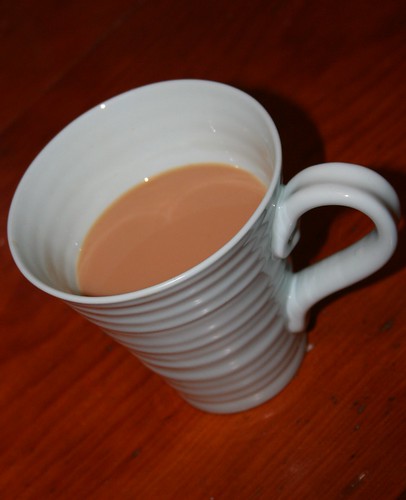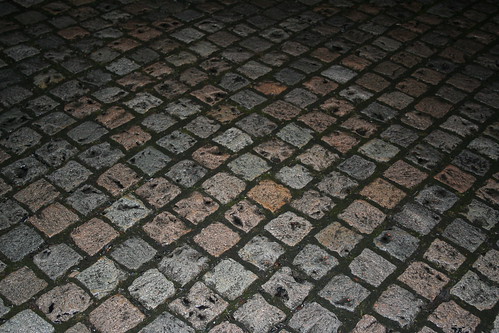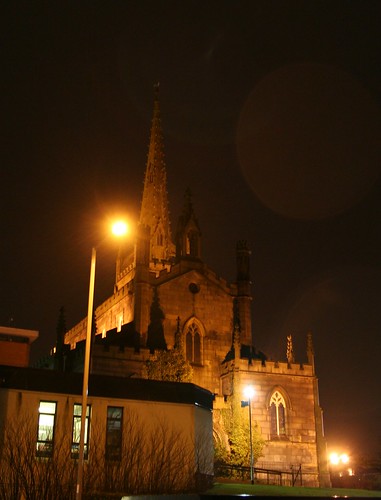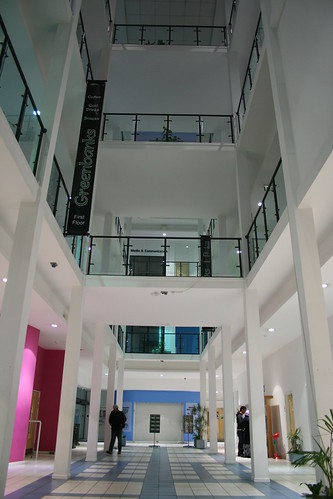This is a little cast metal tiger, one of a pair that belong to an inkstand we bought in Delhi. We don’t actually have the inkstand any more, just the two tigers and the back panel, which has three reliefs on it.
The tigers are only a few inches tall, and because they have lost their inkstand home, they don’t have a real home: they can’t stand up on the screws that extend below their feet. This one is balanced on the mantelshelf (yes, that’s the living room wallpaper behind him, and believe me when I say it’s the quietest wallpaper in the house).
We bought the inkstand from an indian antiques and art shop in Delhi four years ago. We went to Simla for Christmas, and had a day in Delhi before we had to fly home. We went for a walk and met a man who escorted us to the antiques shop, which appeared to be some kind of government institution, with some very expensive art. I know perfectly well the man made commission on us, but I don’t mind. We did spend quite a bit of money there, including a painting that cost a substantial amount. I did resist the amazing jewellery, though, which could easily have bankrupted us.









